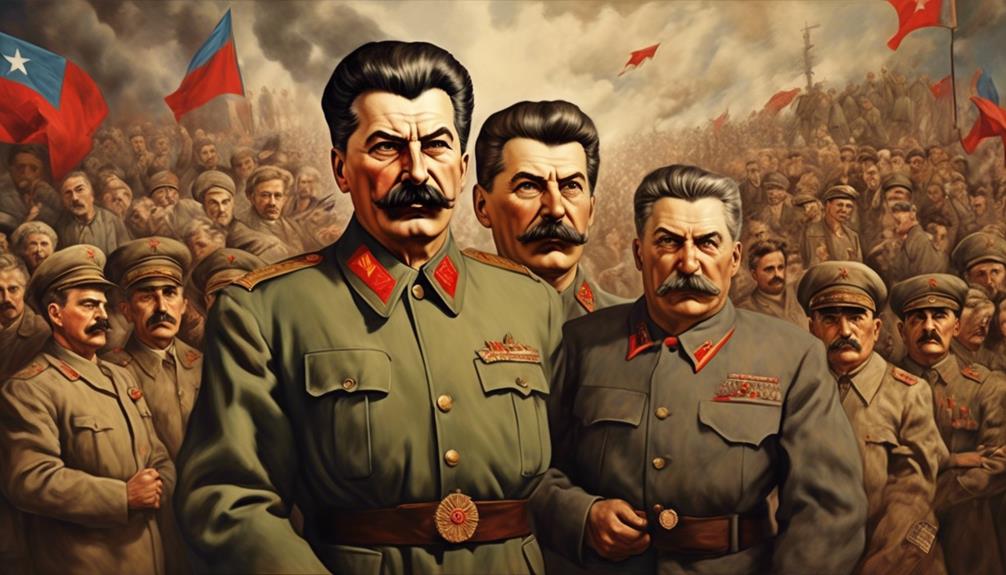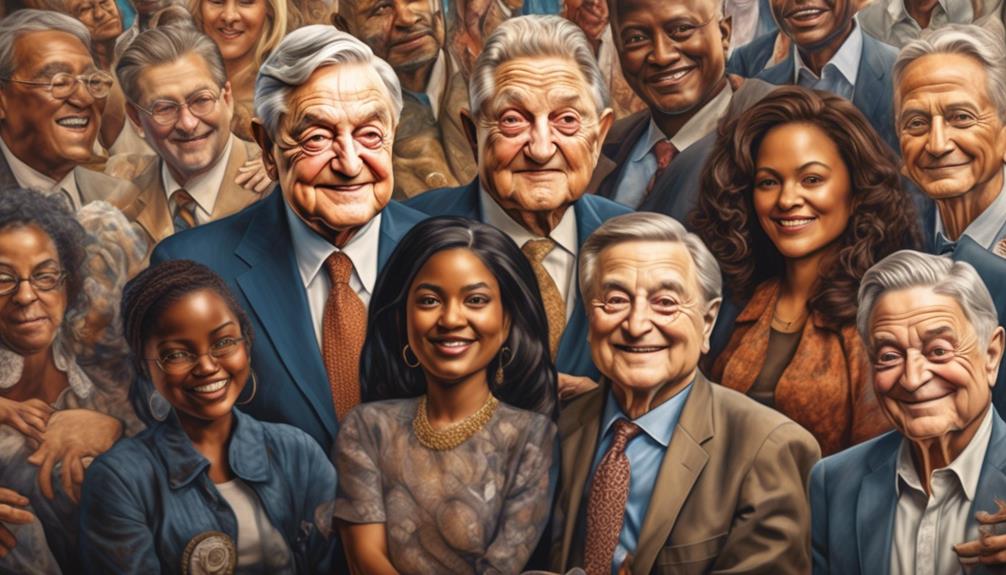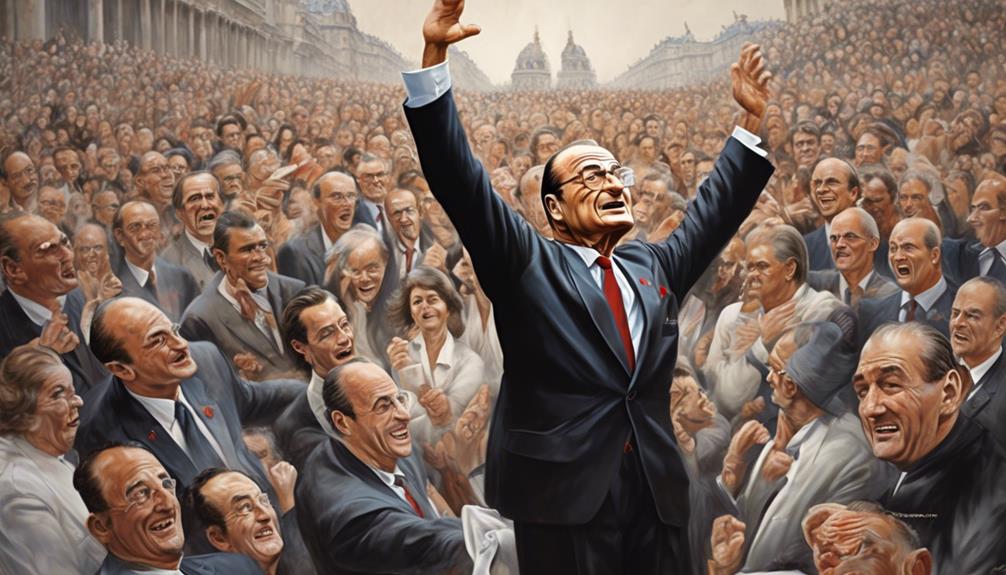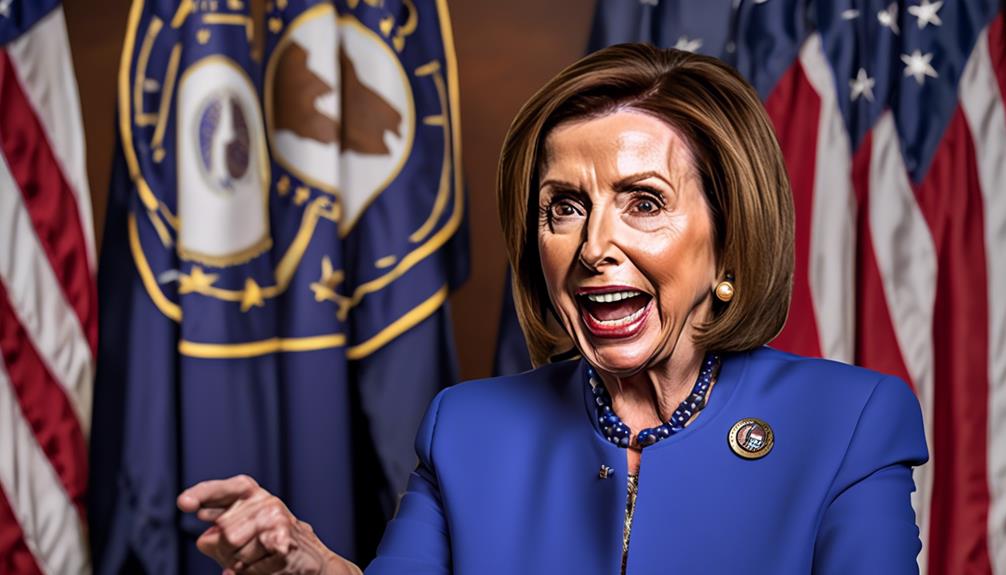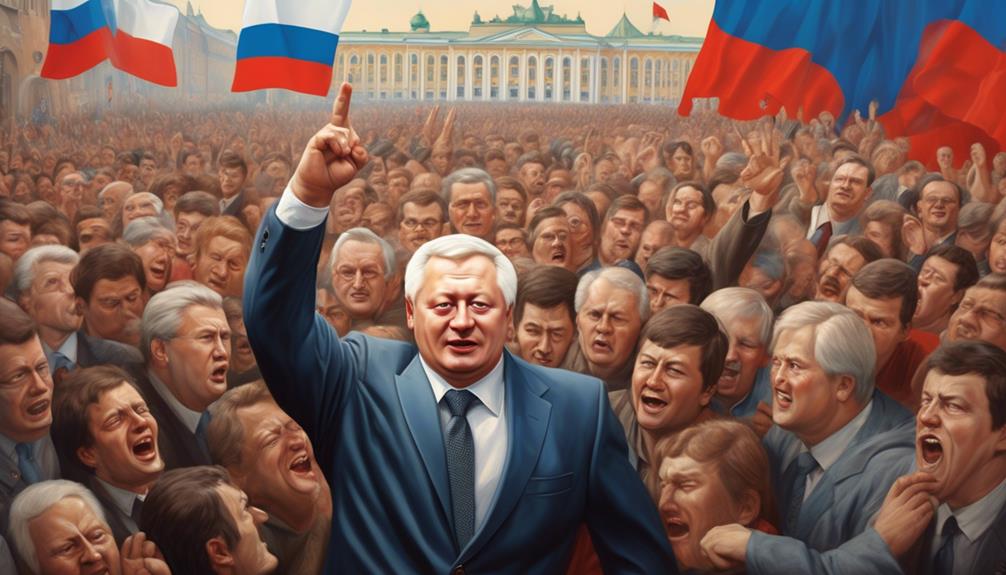As authors, we frequently find inspiration in the sayings of notable personalities from history. Joseph Stalin, the communist ruler and tyrant of the Soviet Union, is one example of such a figure.
Stalin's quotes provide insight into his ideology and the methods he employed to maintain control over his regime. Through the use of totalitarianism, propaganda, and a ruthless pursuit of enemies, Stalin aimed to shape the narrative of his rule.
His manipulation of history and the creation of a cult of personality further exemplify his desire for absolute power. In this introduction, we will explore the quotes of Joseph Stalin, shedding light on his vision for a socialist state, his brutal purge of the party, and the lasting legacy of his dictatorship.
Key Takeaways
- Joseph Stalin implemented totalitarian control over every aspect of Soviet society, including the economy, politics, culture, and daily lives of citizens.
- Stalin extensively used propaganda to manipulate public opinion, shape beliefs, and control the narrative to serve his interests.
- Stalin persecuted and ruthlessly pursued individuals perceived as enemies of the state, employing purges, forced labor camps, secret police, show trials, and censorship.
- The lasting legacy of Stalin's dictatorship includes millions of deaths, widespread suffering, fear, and repression, as well as the influence of his industrialization policies on the Soviet Union's economic and social development.
Stalin's Belief in Totalitarian Control
Stalin firmly believed in the implementation of totalitarian control, which allowed him to exert complete authority over every aspect of Soviet society. This belief formed the foundation of his ideology and guided his actions as the leader of the Soviet Union. Totalitarian control, as defined by Stalin, meant absolute power and control over the economy, politics, culture, and daily lives of Soviet citizens.
Stalin's ideology aimed to transform the Soviet Union into a socialist utopia, where the state had complete control over all aspects of society. He believed that this level of control was necessary to ensure the rapid industrialization and modernization of the country. Stalin was convinced that only through strict central planning and state intervention could the Soviet Union catch up with the capitalist West and become a global superpower.
To achieve this vision, Stalin implemented a series of policies and measures that consolidated his power and suppressed any opposition. He purged the Communist Party of perceived threats, implemented collectivization of agriculture, and initiated the Five-Year Plans, which aimed to rapidly industrialize the nation. Through these actions, Stalin sought to solidify his control and create a society that adhered strictly to his ideological principles.
The Power of Propaganda in Stalin's Regime
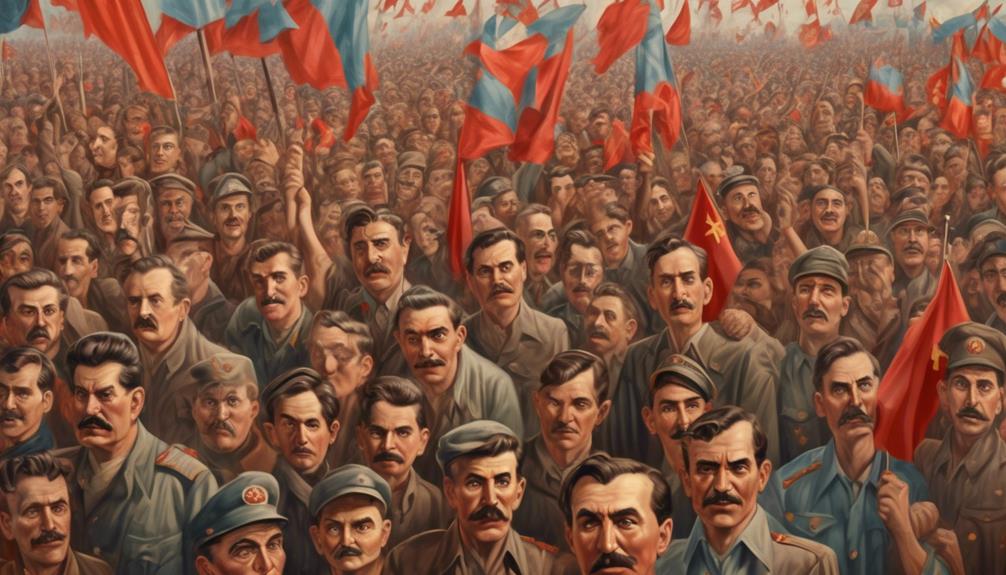
Propaganda played a crucial role in shaping and reinforcing the beliefs and actions of the Soviet population under Stalin's regime. The impact of propaganda on society was immense, as it effectively manipulated public opinion and controlled the narrative to serve Stalin's interests. Here are three key ways in which propaganda influenced Soviet society:
- Indoctrination: Propaganda was used to instill loyalty and devotion to Stalin and the Communist Party. Through relentless campaigns, the population was constantly bombarded with messages praising Stalin's leadership and promoting the ideals of communism. This indoctrination created a sense of unity and purpose among the Soviet people, reinforcing their commitment to the regime.
- Demonization of Enemies: Propaganda was also used to vilify perceived enemies of the state, such as political dissidents, capitalists, and foreign powers. By portraying these individuals and groups as threats to the socialist cause, propaganda justified the regime's oppressive measures and consolidated its power. The demonization of enemies also fostered a climate of fear and suspicion within society, discouraging dissent and reinforcing conformity.
- Cult of Personality: Stalin was elevated to the status of a deity through propaganda. Portrayed as the benevolent father figure and savior of the Soviet Union, Stalin's image was ubiquitous in public spaces and media. This cult of personality not only reinforced his authority but also created a sense of awe and adoration among the population. It further solidified the regime's control by making any criticism of Stalin tantamount to treason.
Stalin's Ruthless Pursuit of Enemies
During Stalin's rule, individuals perceived as enemies of the state faced relentless persecution and a ruthless pursuit to eliminate any dissent or opposition. Stalin's ruthlessness in leadership had a profound impact on Soviet society, as it created an atmosphere of fear and suspicion, where citizens were hesitant to express their true opinions or challenge the regime.
To understand the extent of Stalin's pursuit of enemies, let us examine a table showcasing some of the methods employed by his regime:
| Methods of Persecution | Examples |
|---|---|
| Purges | The Great Purge of 1936-1938 |
| Forced Labor Camps | Gulags where perceived enemies were sent |
| Secret Police | NKVD, responsible for surveillance and arrests |
| Show Trials | Public trials used to justify purges and executions |
| Censorship and Propaganda | Control of media and dissemination of state ideology |
The Great Purge, one of the darkest chapters in Soviet history, saw thousands of party officials, intellectuals, and ordinary citizens executed or sent to labor camps. Stalin's secret police, the NKVD, carried out mass arrests, torture, and extrajudicial killings to instill fear and maintain control. Show trials were conducted to provide a veneer of legality to these repressions, with confessions often coerced through torture.
The impact on Soviet society was devastating. People lived in constant fear of being denounced by their neighbors, colleagues, or even family members. The pursuit of enemies created a climate of mistrust, where self-preservation became the primary concern. Intellectual and artistic creativity suffered, as censorship stifled freedom of expression. The elimination of perceived enemies also weakened the country's leadership, removing experienced individuals and leaving a void that hindered effective governance.
Stalin's Manipulation of History
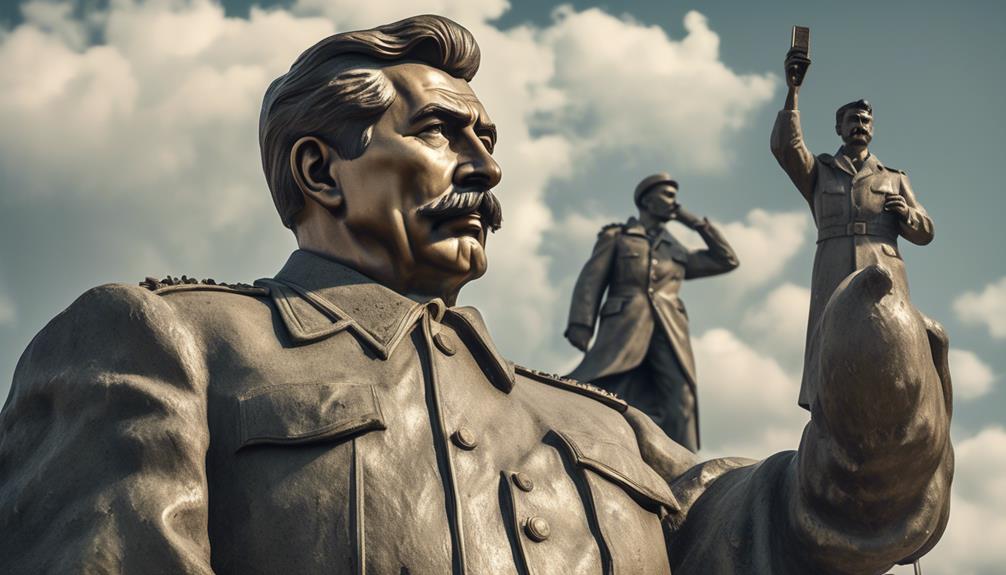
Stalin's manipulation of history was a key component of his regime's control over the Soviet Union. Through censorship of historical records, Stalin was able to shape the narrative to fit his own agenda and suppress any information that contradicted his desired version of events.
Additionally, propaganda and the rewriting of narratives further solidified his grip on power by presenting a distorted view of history that portrayed Stalin as a heroic figure. Dissenting voices were ruthlessly suppressed, ensuring that only the state-approved version of history was disseminated to the masses.
Censorship of Historical Records
The manipulation of historical records during Joseph Stalin's regime has had a profound impact on our understanding of the past. This censorship of historical records was a deliberate attempt by Stalin to control the narrative and promote his own version of history. It had the following effects:
- Distortion of the truth: By censoring and altering historical records, Stalin was able to create a version of history that aligned with his ideology and political agenda. This led to a distortion of the truth and an inaccurate portrayal of events.
- Suppression of dissent: Censorship of historical records allowed Stalin to suppress any information or evidence that contradicted his regime's policies. This stifled intellectual freedom and critical thinking, preventing the public from accessing alternative perspectives and ideas.
- Historical revisionism: Stalin's manipulation of historical records involved rewriting history to fit his narrative. This not only erased the contributions and experiences of certain individuals and groups but also created a false historical legacy for Stalin himself.
The censorship of historical records under Stalin's regime continues to impact our understanding of the past, highlighting the importance of preserving and critically examining historical sources.
Propaganda and Rewriting Narratives
Propaganda and the rewriting of narratives played a significant role in shaping the historical perspective during Joseph Stalin's rule. Stalin recognized the power of controlling information and used it to his advantage in order to maintain his grip on power. One of the ways he accomplished this was through the manipulation of truth and the rewriting of history to fit his own narrative. By controlling the media and censoring dissenting voices, Stalin was able to shape the historical record in a way that glorified his regime and suppressed any opposition. This rewriting of history allowed Stalin to present himself as a heroic figure, while erasing any evidence of his atrocities and failures.
To illustrate this manipulation of truth, consider the following table:
| Rewritten Narrative | Truth |
|---|---|
| Stalin as a great leader who saved the Soviet Union from external threats | Stalin's policies caused millions of deaths through famine and purges |
| The Soviet Union as a prosperous and powerful nation under Stalin's rule | The Soviet Union faced economic stagnation and widespread poverty |
| Stalin as the architect of a successful communist revolution | The revolution was marred by violence and the suppression of dissenting voices |
Through the rewriting of history, Stalin was able to create a distorted narrative that justified his brutal rule and masked the true nature of his regime. This manipulation of truth not only deceived the Soviet people, but also had a lasting impact on how Stalin is remembered in history. It serves as a stark reminder of the dangers of allowing those in power to control the narrative and rewrite history for their own gain.
Suppression of Dissenting Voices
Dissenting voices were systematically suppressed under Joseph Stalin's regime, as he employed various tactics to manipulate history and maintain absolute control over the narrative. The consequences of this censorship were far-reaching and had a profound impact on both individuals and society as a whole. Here are three key ways in which the suppression of dissenting voices shaped the Soviet Union under Stalin:
- Silencing opposition: By censoring and suppressing alternative viewpoints, Stalin effectively silenced any opposition to his rule. This created an environment of fear and conformity, where individuals were afraid to express their true thoughts and beliefs.
- Control over information: By controlling the narrative and manipulating historical records, Stalin was able to shape public opinion and maintain his grip on power. This allowed him to present himself as a heroic figure and justify his actions, while hiding the true extent of his atrocities.
- Legacy of fear: The suppression of dissenting voices created a culture of fear and distrust, where individuals lived in constant apprehension of being denounced or punished for expressing their opinions. This legacy of fear continued long after Stalin's reign, leaving a lasting impact on Soviet society.
The consequences of Stalin's censorship and suppression of dissenting voices were severe, leading to the stifling of intellectual freedom, the erasure of alternative perspectives, and the perpetuation of a dangerous cult of personality.
The Cult of Personality Surrounding Stalin
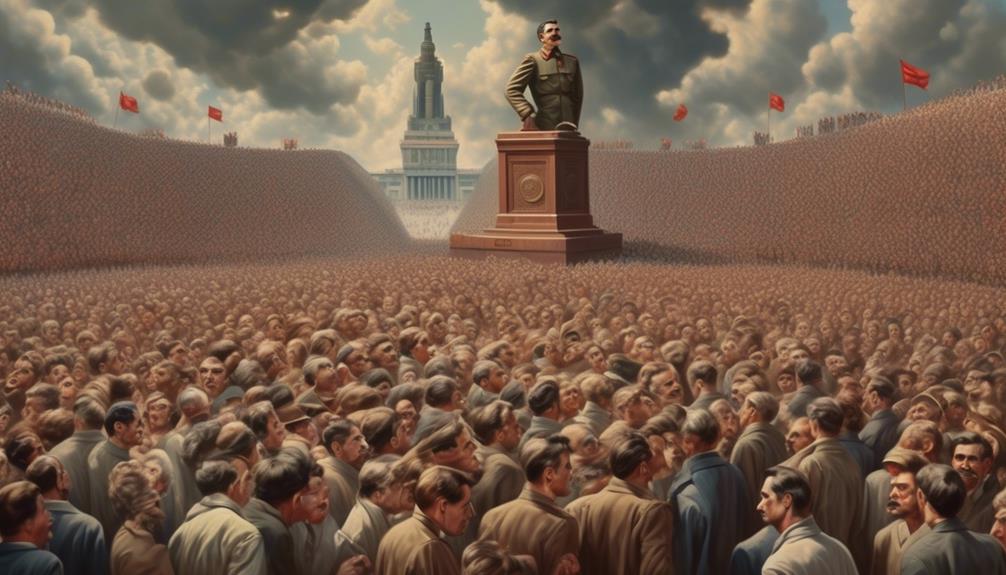
Throughout his rule, Joseph Stalin fostered a pervasive cult of personality that sought to elevate his image and consolidate his power. This cult of personality was achieved through various means, including the manipulation of history to glorify Stalin and his accomplishments. By controlling the narrative, Stalin was able to shape public opinion and maintain his grip on power.
To understand the extent of the cult of personality surrounding Stalin, let us examine its key features:
| Features | Description |
|---|---|
| Propaganda Machine | Stalin utilized an extensive propaganda machine to promote his image as a strong and infallible leader. His image was plastered across the country, and his achievements were exaggerated and celebrated. |
| Suppression of Dissent | Any dissent or criticism of Stalin was swiftly suppressed, ensuring that only positive narratives about him were allowed to circulate. This created an environment of fear and conformity. |
| Rewriting of History | Stalin manipulated historical records to portray himself as the rightful successor to Lenin and downplayed the contributions of other political figures. His role in the Russian Revolution was exaggerated to cement his status as a heroic leader. |
Stalin's Justification of Collectivization

Stalin's justification for collectivization of agriculture was rooted in his belief that it would lead to increased productivity, modernization, and the rapid industrialization of the Soviet Union.
- Enhanced Productivity: Stalin argued that by consolidating individual farms into collective units, the use of modern machinery and technology would be maximized. This, in turn, would boost agricultural output and provide surplus food for the growing urban population.
- Modernization: Stalin believed that collectivization would enable the adoption of more efficient farming methods and practices, such as crop rotation and scientific breeding. These advancements would help transform the largely backward agricultural sector into a modern industry capable of meeting the demands of a rapidly industrializing nation.
- Economic Equality: Another key aspect of Stalin's justification was the promise of economic equality. He argued that by eliminating private ownership of land, collectivization would ensure a fair distribution of resources and wealth. This would create a more equitable society, where the rural population would enjoy the benefits of industrialization and urbanization.
While Stalin's justifications for collectivization held promise in theory, the implementation of this policy led to significant hardships for the peasantry. Forced collectivization, along with the elimination of individual incentives, resulted in widespread resistance, decreased agricultural output, and the loss of countless lives during the ensuing famines. Despite its intended goals, collectivization ultimately failed to achieve the desired economic equality and industrialization envisioned by Stalin.
Stalin's Vision for a Socialist State

Stalin's vision for a socialist state encompassed two key points: economic equality and centralized state control.
In his pursuit of economic equality, Stalin believed in redistributing wealth and resources to ensure that all citizens had access to basic necessities. This involved collectivization of agriculture and nationalization of industries.
Additionally, Stalin advocated for a centralized state control, where the government had complete authority over decision-making and planning. This allowed for a planned economy where resources could be allocated efficiently and according to the needs of the state.
Economic Equality in Socialism
In examining the vision for a socialist state, one can observe the importance placed on achieving economic equality as a fundamental principle. This principle is rooted in the socialist belief that wealth should be distributed more equitably among all members of society.
Here are three key aspects of economic equality in socialism:
- Economic redistribution: Socialism seeks to redistribute wealth and resources to ensure that everyone has access to basic necessities and opportunities. This involves taxing the wealthy and providing social programs to support the less fortunate.
- Socialist principles: Economic equality is seen as a means to achieve social justice and eliminate class divisions. By ensuring that everyone has equal access to resources, education, and healthcare, socialism aims to create a more equitable society.
- Challenging capitalism: Socialism challenges the capitalist system, which is seen as perpetuating inequality and exploitation. By prioritizing economic equality, socialism seeks to dismantle the hierarchies and power imbalances inherent in capitalism.
Centralized State Control
To further explore the implementation of economic equality in socialism, it's crucial to examine the concept of centralized state control as envisioned by Joseph Stalin for a socialist state.
Stalin believed in the establishment of a centralized authority that would exercise state power in all aspects of society. He advocated for a strong government that would have control over the economy, production, and distribution of resources. This approach aimed to ensure that the state had the power to direct and regulate all economic activities, leading to a planned economy.
Stalin's Brutal Purge of the Party
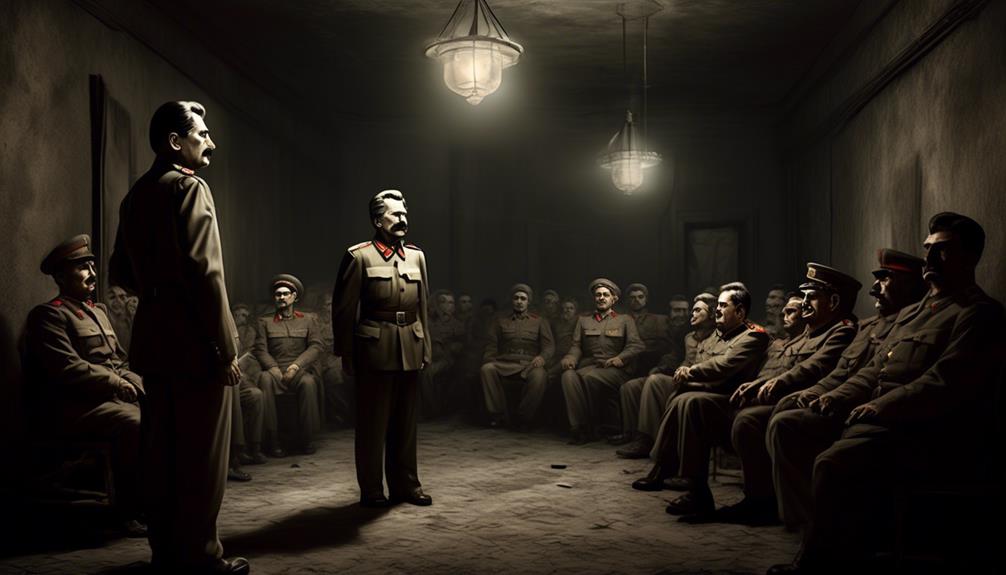
Did Stalin's brutal purge of the party lead to significant changes in the Soviet Union's political landscape?
- Loss of Lives: The brutality of Stalin's purges resulted in the loss of millions of lives. Party members accused of disloyalty or opposition to Stalin's rule were arrested, imprisoned, and often executed. This widespread fear and paranoia within the party led to a climate of terror and distrust, where even innocent individuals were targeted and punished.
- Weakening of Party Structure: The impact on the party structure was significant. Stalin's purges eliminated many experienced and capable party members, leaving a void in leadership positions. This weakened the party's ability to govern effectively and reduced its institutional strength. The purges also instilled a culture of fear, where party members were hesitant to express dissenting opinions, leading to a lack of critical thinking and stifling of creativity within the party.
- Consolidation of Power: Stalin's brutal purge of the party allowed him to consolidate his power and establish himself as the undisputed leader of the Soviet Union. By eliminating potential rivals and dissenters, Stalin ensured his dominance and control over all aspects of the party and the state. This consolidation of power enabled him to implement his policies and ideology without significant opposition.
Stalin's Contempt for Individual Rights
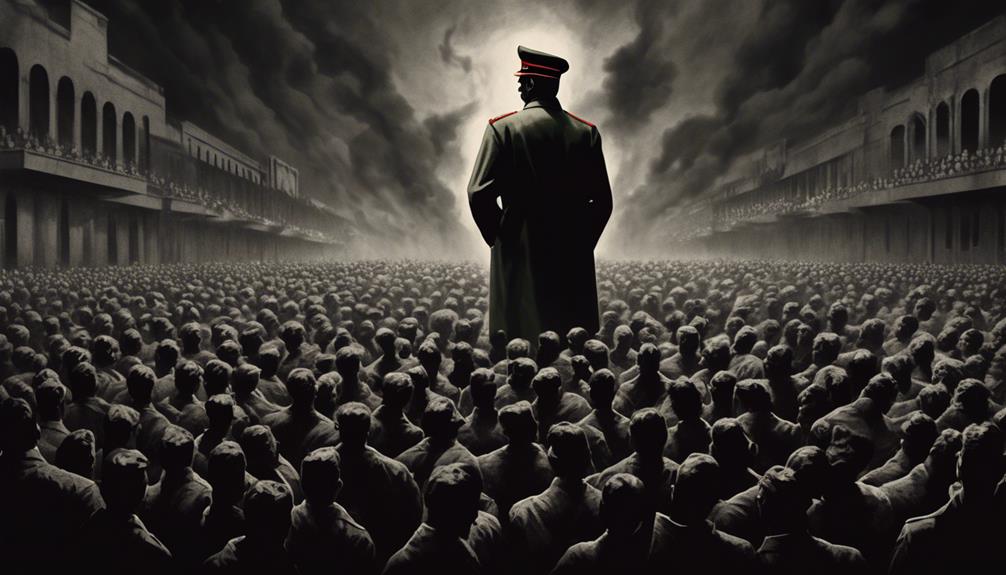
Stalin's contempt for individual rights was evident through his suppression of dissent and his prioritization of the collective over the individual.
Under his rule, any form of opposition or criticism was met with severe consequences, including imprisonment, exile, and even execution.
This disregard for individual rights allowed Stalin to maintain absolute control, but it came at the cost of freedom and human rights for the people.
Suppression of Dissent
With a contempt for individual rights, Joseph Stalin actively suppressed dissent during his rule. His use of propaganda and manipulation of historical records were key tools in maintaining his iron grip on power. Here are three chilling ways in which Stalin suppressed dissent:
- Political Purges: Stalin executed a series of purges to eliminate perceived threats to his regime. Party members, military officials, intellectuals, and ordinary citizens were targeted, resulting in mass arrests, show trials, and executions. This created an atmosphere of fear and ensured loyalty to the regime.
- Censorship and Propaganda: Stalin tightly controlled the media and used propaganda to shape public opinion. Dissenting voices were silenced, and only information that supported the regime's narrative was allowed. This manipulation of information further restricted dissent and reinforced the cult of personality around Stalin.
- Rewriting History: Stalin manipulated historical records to portray himself as a heroic leader and erase any mention of his mistakes or atrocities. Textbooks, archives, and museums were all subject to revision, distorting the truth and preventing any alternative narratives from emerging.
Through these methods, Stalin suppressed dissent and consolidated his power, leaving a legacy of fear and oppression.
Collective Over Individual
Suppression of dissent wasn't the only way Joseph Stalin exerted his control; his contempt for individual rights was evident in his prioritization of collective interests over those of the individual. Stalin believed that individualism threatened the goals of the state and hindered societal harmony. He emphasized collective responsibility, advocating for the subjugation of individual needs and desires to the greater good of the collective.
Stalin's policies aimed at creating a unified and homogenous society, where everyone worked towards a common goal. This disregard for individual rights manifested in various forms, such as the collectivization of agriculture and the elimination of private property, which aimed to ensure equal distribution of resources among the masses.
Stalin's approach ultimately sacrificed individual liberties for the sake of maintaining social order and advancing the communist ideology.
Stalin's Legacy: Lessons From a Dictator
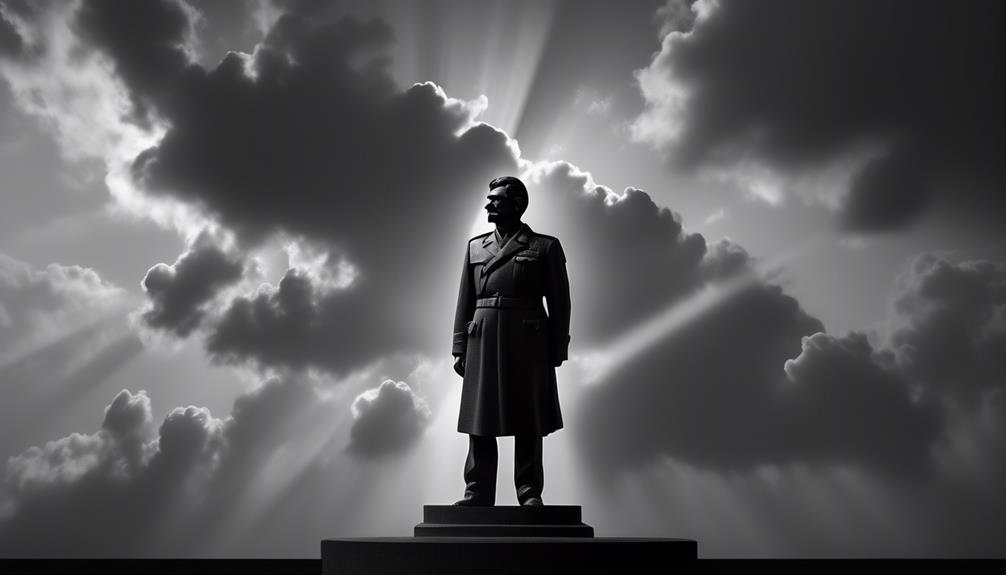
One can't underestimate the importance of studying Joseph Stalin's legacy as a dictator in order to learn valuable lessons for the future. Despite the atrocities committed during his rule, it's crucial to analyze the impact of Stalin's policies and the long-lasting effects they had on the Soviet Union and the world.
- Human Rights Violations: Stalin's rule was marked by widespread human rights abuses, including forced labor camps, purges, and mass executions. By examining these violations, we can understand the importance of safeguarding individual liberties and the dangers of unchecked power.
- Centralized Control: Stalin's policies aimed at consolidating power in the hands of the state resulted in a highly centralized government. This concentration of authority stifled individual freedoms, creativity, and innovation. It's essential to recognize the value of decentralization and the importance of fostering a pluralistic society.
- Cult of Personality: Stalin cultivated a personality cult that portrayed him as an infallible leader. This manipulation of public perception highlights the dangers of unchecked propaganda and the need for a critical and informed citizenry.
Frequently Asked Questions
What Were Some of the Specific Tactics Used by Stalin to Manipulate History in the Soviet Union?
Some of the specific tactics used by Stalin to manipulate history in the Soviet Union included:
- Censorship: By controlling the information that reached the public, Stalin was able to shape the perception of events and individuals to fit his desired narrative.
- Propaganda: Stalin utilized propaganda to spread his ideology and promote his image as a great leader. This involved the dissemination of biased information, often through state-controlled media outlets.
- Rewriting historical narratives: Stalin actively altered historical records to align with his own version of events. This included editing or omitting information that contradicted his regime or glorifying certain aspects of Soviet history.
Additionally, Stalin's pursuit of enemies, which included purges and show trials, had a profound impact on Soviet citizens. These tactics instilled fear and distrust within society, as individuals were constantly under surveillance and suspected of disloyalty.
Ultimately, these tactics allowed Stalin to consolidate power and maintain control over the Soviet Union. They ensured that his version of history prevailed and that dissenting voices were silenced or discredited.
How Did Stalin's Pursuit of Enemies in His Regime Impact the Everyday Lives of Soviet Citizens?
Stalin's pursuit of enemies in his regime had a profound impact on the everyday lives of Soviet citizens. The atmosphere of fear and suspicion created by Stalin's purges and show trials permeated society, leading to a climate of constant vigilance and paranoia.
People lived in constant fear of being labeled as enemies of the state, which resulted in self-censorship and the erosion of trust within communities.
This psychological manipulation had a detrimental effect on the social fabric of Soviet society, leaving lasting scars on the collective psyche of its citizens.
What Were Some of the Key Elements of the Cult of Personality Surrounding Stalin and How Did It Contribute to His Power?
Some key elements of Stalin's cult of personality included propaganda, censorship, and the promotion of his image as a strong and infallible leader. This cult of personality contributed to his power by creating a sense of devotion and loyalty among the Soviet population.
Stalin's image was carefully crafted to portray him as the embodiment of the Communist ideal and the savior of the Soviet Union. This allowed him to consolidate his power and suppress dissent, ultimately solidifying his control over the country.
What Were Some of the Justifications Stalin Provided for His Policy of Collectivization and How Did It Impact the Agricultural Sector in the Soviet Union?
Stalin's collectivization policy was justified by the need to modernize agriculture and increase food production in the Soviet Union. However, its impact on the agricultural sector was profound.
The forced consolidation of farms led to significant economic consequences, including decreased productivity and widespread famine. Additionally, resistance from peasants resulted in violent repression and the loss of millions of lives.
What Lessons Can Be Learned From Stalin's Legacy as a Dictator and How Have They Influenced Political Systems Around the World?
Lessons learned from Stalin's legacy as a dictator have had a significant global influence on political systems around the world. By studying his methods and policies, we can better understand the dangers of totalitarianism, the importance of human rights, and the need for checks and balances in government.
Stalin's brutal regime serves as a stark reminder of the potential consequences of unchecked power and the importance of fostering democracy, transparency, and accountability in political systems.
What similarities or differences can be found in the quotes of Joseph Stalin and Benito Mussolini as dictators and leaders?
Both Joseph Stalin and Benito Mussolini quotes fascist leader reflect their strong and authoritative leadership styles. While both leaders were known for their dictatorial rule, Stalin’s quotes often emphasized control and discipline, while Mussolini’s quotes emphasized nationalism and unity. Despite their differences, both leaders used propaganda to maintain power.
Conclusion
In conclusion, Joseph Stalin's reign as the leader and dictator of the Soviet Union was marked by his unwavering belief in totalitarian control. Through the power of propaganda, ruthless pursuit of enemies, manipulation of history, and the creation of a cult of personality, Stalin established a vision for a socialist state that disregarded individual rights.
His brutal purge of the party and contempt for dissenting voices left a lasting legacy of fear and oppression. Truly, Stalin's reign serves as a stark reminder of the dangers of unchecked power and the importance of safeguarding democracy.
Joy, as our Editor in Chief, ensures the highest standard of content. Her talent in writing is complemented by her attention to detail and passion for literature and culture. Joy’s expertise and love for the English language shine through in her editorial work, making each piece a testament to quality and clarity.
